Agate - the Banded Gemstone
Agate is a beautiful and very popular gemstone that is widely recognized for its unique and varied colors and banding. It is a type of microcrystalline quartz that is commonly used as an affordable alternative to pricey gemstones in jewelry. It may also be carved into figures or statues, or used in handles for knives.
The word agate comes from its ancient location around the Achates River (Dirillo) in Sicily, Italy. Idar-Oberstein, in Germany, is known as the first place where agate was extensively mined and polished, and it is still a very important center for agate cutting and polishing. Almost all agates are cut and polished before they are displayed in the collection. However, agates from Fairburns, Lake Superior, and some other naturally tumbled agates are kept in their natural state.
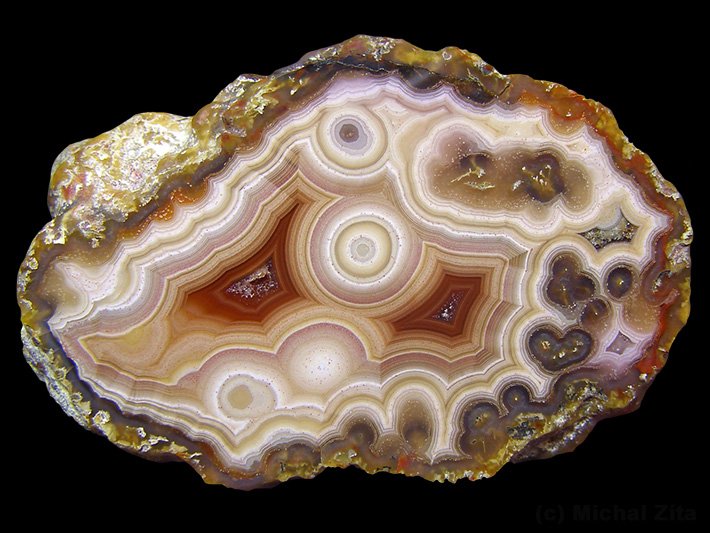
Agate collecting
Almost everybody has some agate in their mineral collection. But many collectors in agate locations specialize in agates only, and some collect only agates from certain areas. Agate has so many different shapes, forms and colors that it can easily fill an entire mineral collection. The most valued speciments are complete and undamaged agate eggs, cut in half and polished. The value of agate skyrockets if it has fine banding and vivid colors. The most valued are highly aesthetic pieces without any damage or internal fissures and cracks.
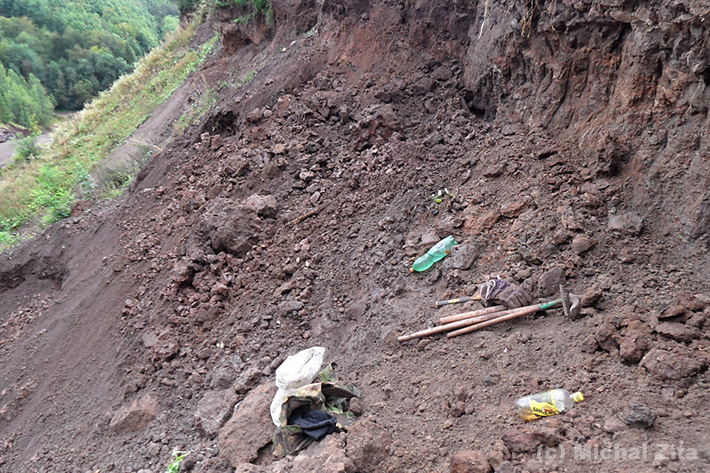
Finding good quality agates is a tough job. Ancient lava flows with agates are often blasted for crushed stone. Unfortunately, blasting produces tiny internal fissures inside agates and makes them much less valuable. The best agates are usually manually dug out of the weathered volcanic rocks. However, it is not possible to tell how the agate looks inside unless its cut. Getting one decent agate often requires cutting dozens of low or mediocre quality agate eggs.
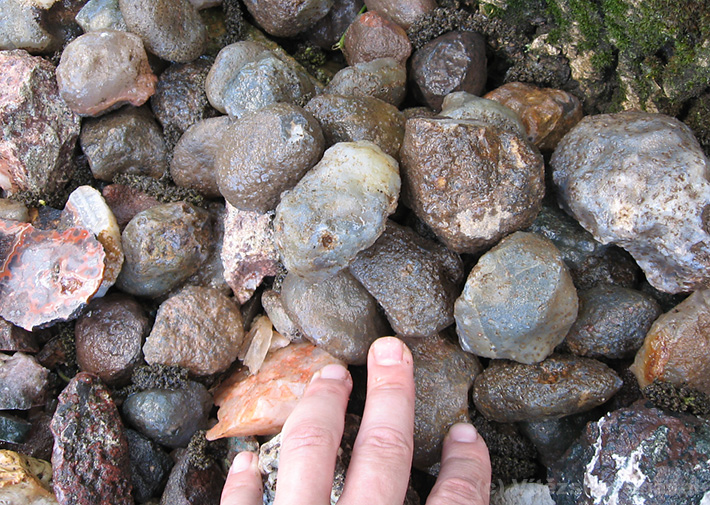
Structure of Agate
The chemical formula of agate is SiO2, or silicon dioxide. Agate is considered a variety of quartz - so it is formed by SiO4 tetrahedrons connected via shared oxygen atoms. Agate is composed of various layers of quartz and microcrystalline chalcedony, often accompanied by small amounts of móganite and opal.

Most quartz and chalcedony, including agate, have a trigonal crystal system. This system usually presents as botryoidal banded masses with a structure that is microfibrous, meaning that it is made of tiny fibers and tends to grow in a shape similar to a bunch of grapes. The microstructure of the agate depends on it mineral composition. Very old paleosoic agates (like those from Czech Republic) are internally recrystallised and very dense - composed of mostly quartz and very fine chalcedony. On the other hand, younger mesosoic agates from Brazil have quite porous structure and thus can be easily artificially colored.

Agate Physical Properties
Agate can be almost any color, including gray, black, white, multicolored, red, blue, yellow, green, pink, orange, purple, and brown. It is almost always banded in appearance, which distinguishes it from other types of chalcedony. There are only a couple of variations of agate that are not banded: moss agate, plume agate and dendritic agate. Even onyx is generally considered a type of agate, since it is usually black and white banded. Some banded forms of carnelian are also labelled agate at some sites.
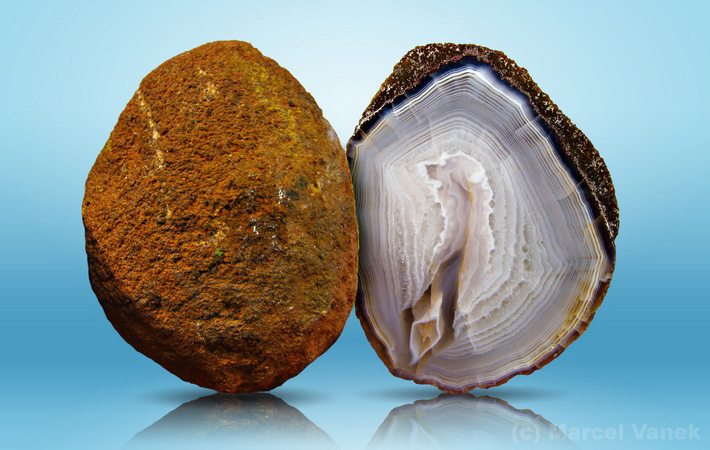
Agate has a hardness of 7 on the Mohs scale, and it is translucent, meaning that light can pass through it. It features a vitreous luster, it is reflective like glass, and has no discernible cleavage.
Formation of Agate
Agates grow in rock cavities known as vesicles, and all true agate comes from volcanic rock. Holes caused by escaping gases in the cooled and hardened lava are eventually filled with silica-rich liquids. Basically, these volcanic vesicles are bubbles of gas inside the lava. When the lava cools, the vesicles which failed to escape are solidified forever.
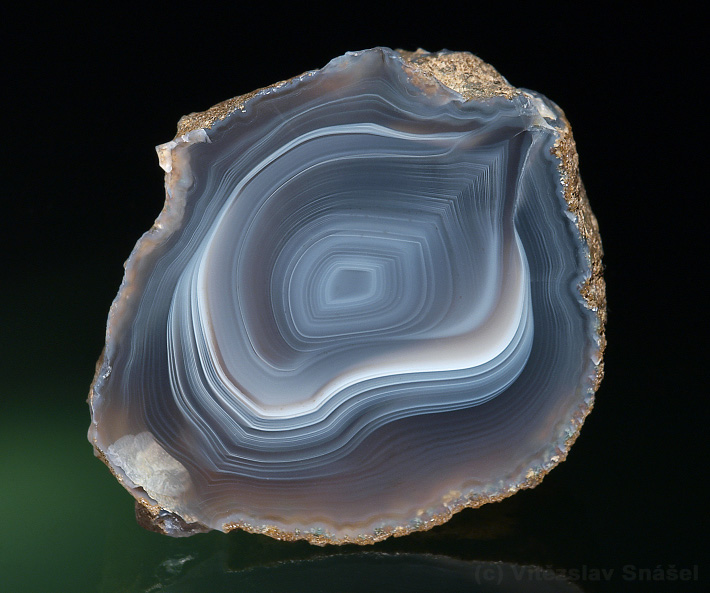
Formation of agate requires irregular inflow of silica-rich gels into the volcanic vesicles. When impurities and other inclusions made their way into this growing chalcedony, various colored bands were formed, thus turning the filled space into agate. Various bands can be produced also by different growth and orientation of chalcedony microfibers. Most agates are grown along the walls of the vesicle, forming typical concentric bands. However, the flow of the fluids might be interrupted by some geological events. If the vesicle still has some open space inside, it might be later filled by horizontally layered agate bands, massive chalcedony, quartz and amethyst crystals or calcite. Some agates are brecciated and again cemented by younger agate or chalcedony.
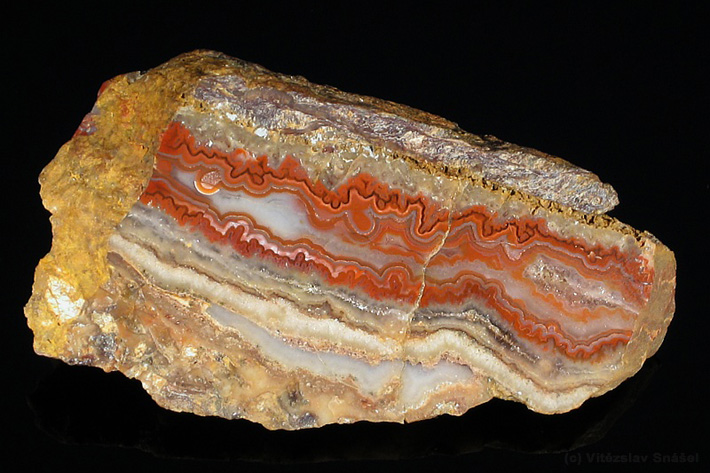
Some agates occur inside certain hydrothermal veins and not in the volcanic vesicles. The silica rich fluids enter the quartz veins and fill the cavities or pseudomorph some older minerals, usually baryte or carbonates. Such vein agates are often accompanied by quartz or amethyst crystals and quite often also by hematite. Most of these vein-type agates are considered chalcedony because they often lack distinctive bands. However, some special types like lightning or breccia agates from Horni Halze in Czech Republic or some big fissures in lavas filled by banded chalcedony from Hungary and Turkey are known as agates. Even some banded chalcedony filling the voids in the triassic sandstones in Gremany is labeled as agate.
Occurrence of Agate
The most productive locality worldwide is Rio Grande do Sul in Brazil. Agates from this huge deposit are dominant on the lapidary market. Unfortunately, Brazilian agates are less dense than many others and are almost always dyed. One of the most famous types of agates are the laguna agates from Ojo de Laguna in Mexico. Other well known Mexican sites are Moctezuma and Rancho Coyamito. Condor agates come from San Rafael in Argentina, and many nice agates are also produced in Artigas, Uruguay.

There are many agate sites on the Czech side of the border, namely Cibousov, Mytinka, Horni Halze and many others. The other regions include Czech localities such as Levin, Kozakov, Rovne, Olesnice, Studenec and others, and Ploczki Gorne and Nowy Kosciol in Poland. Interestingly colored and shaped agates occur at many sites in Hungary and Turkey, while classic agates are found in Scotland.
Agates occur in several of the United States, including Mojave agates from California, snakeskin agates from Oregon, thunder-eggs from New Mexico, fairburn agates from South Dakota, Lake Superior agates from Michigan and agates from many other states.
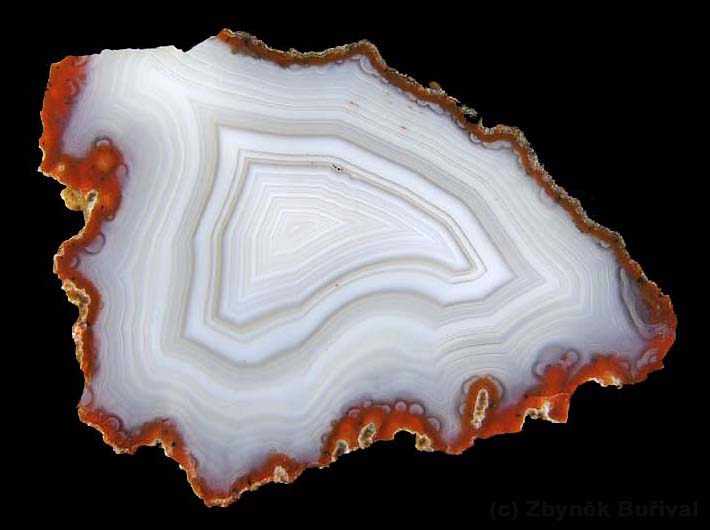
African sites include Aouli, Asni, Kerrouchen, Amerzgane and others in Morocco, as well as many sites in Botswana. Less common agates come from India, Russia, Mongolia or China.
Agate Varieties
There are several different varieties of agate. Many agates display features of several varietes - such as plume agates with quartz filled geode inside, agates with bands and hair- or moss-like inclusions and many other combined varietes. The below listed agate variations are the most common, described by their best-known names. The classification is often related to the locality - the same type of agate might be called something different depending on where it is found.
Snakeskin Agate
This term refers to two different types of agate. One of these features a layer of scale-like markings similar to that of a snake. The other sports black bands in the form of concentric circles on a reddish-brown bodycolor.
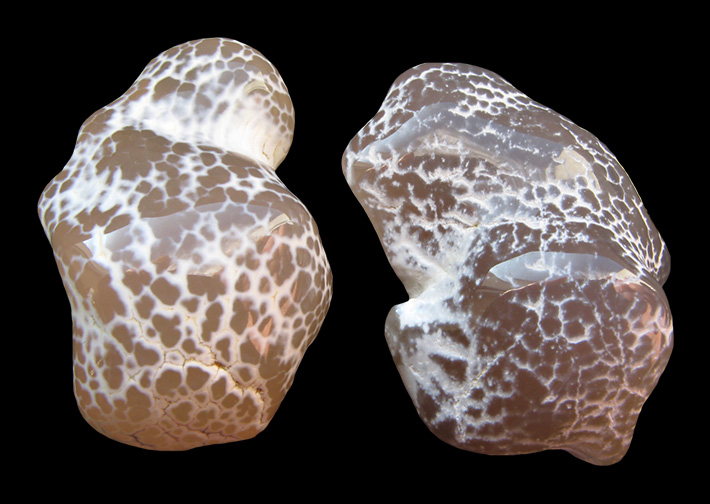
Blue Lace Agate
Blue Lace Agate forms in a combination of pale blue, blue-gray, and white bands. It is usually found with bands that form a wavy or lace like pattern, hence its name.
Sardonyx
Sardonyx features bands of red or brown that are parallel and alternate with bands of black or white. The main bodycolor is usually reddish-brown. This colored layered structure was perfect for carving cameos and was extensively used by ancient Greeks and Romans.
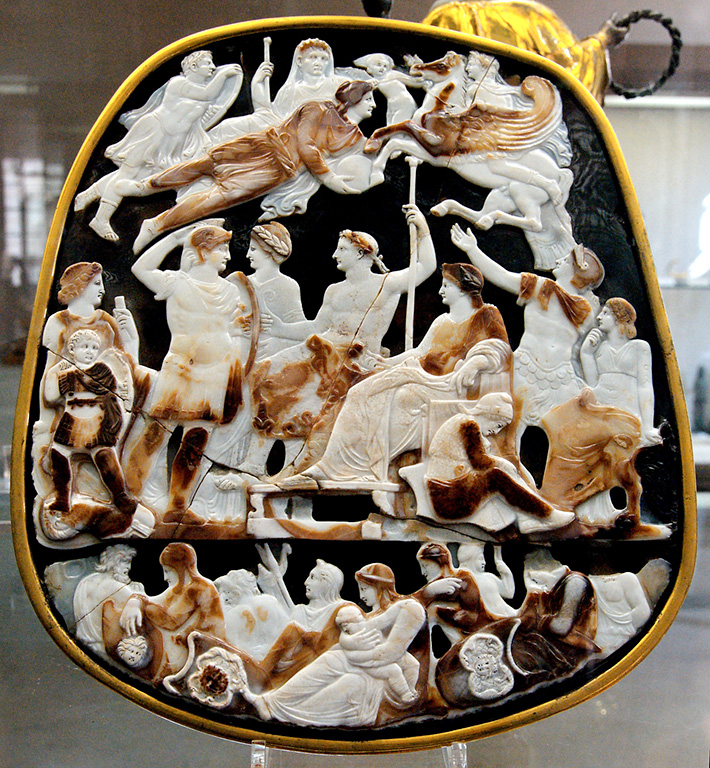
Agate Geode
This type of agate forms in a layer around a cavity inside a geode. A geode is a hollow rock that is filled with crystals. In an agate geode, quartz crystals are usually present along with the layer of agate.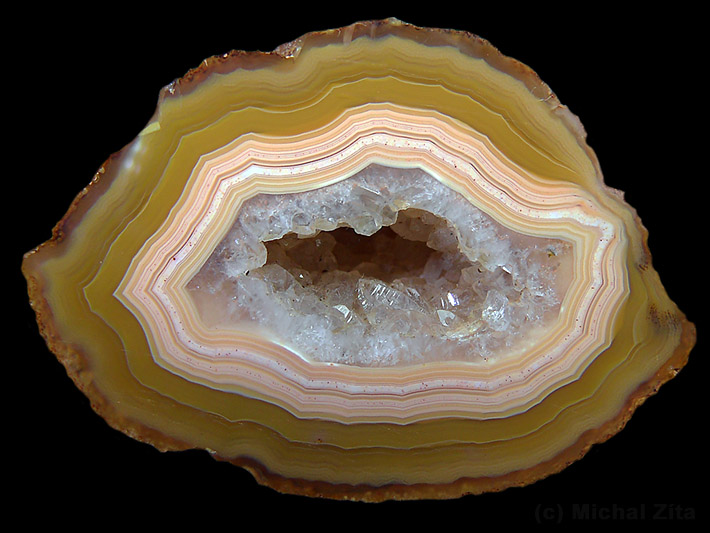
Botswana Agate
As the name states, Botswana Agate comes from Africa. Its bands are slightly different than most agate bands, as they are made up of very fine, very thin parallel lines that may be peach, white, or purple in color.
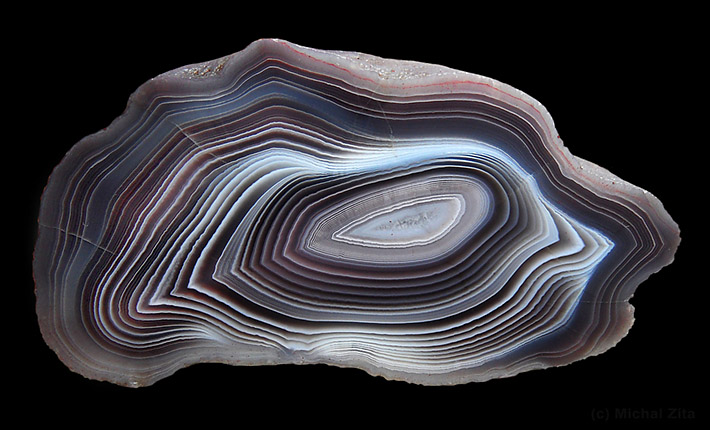
Sagenite Agate
Sagenite agate has inclusions that resemble paper fans. These inclusions are pointed or long and slender, similar to single human hairs. The thin inclusions often create fans or bursts into the agate or chalcedony matrix.
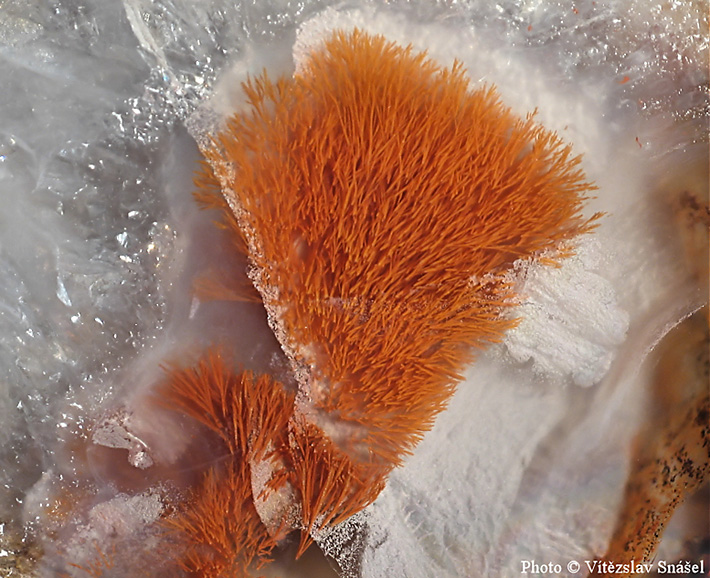
Crazy Lace Agate
This type of agate is unique in that its bands have formed into different shapes than some of its cousins. The bodycolor of this agate is usually a gray or muted red or purple, and it features twisted bands and even blob-like shapes rather than the traditional straight banding of other agate types.
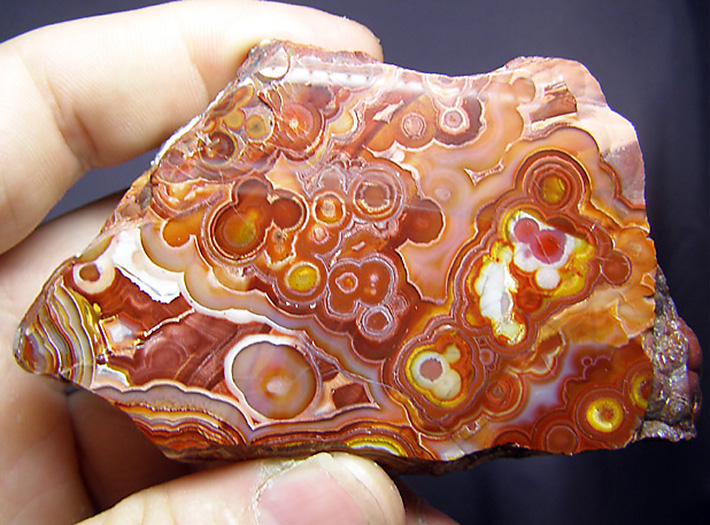
Onyx
Onyx can refer to one of several different minerals, but most commonly, the term is used to describe a banded black and white type of chalcedony that falls into the agate category. Onyx may also be solid black in color. Some dealers use the term onyx also for many types of other chalcedony varietes or even banded aragonite.

Condor Agate
A Condor Agate comes from San Rafael, Argentina, which is one of the better-known mining locations for agates. This type of agate usually presents in many different vivid colors, particularly reds, browns and greens.

Moss Agate
Moss agates are technically not an agate, since they do not present banding, but are instead a variety of chalcedony with green Hornblende inclusions that look like moss growing inside the rock. The moss might be also created by other minerals, like chlorite. Some collectors label agates with yellow, red or brown inclusions (sagenite agate) as a moss agate.
Fire Agate
This popular type of agate has a naturally iridescent finish and features a play-of-color like that of an opal. This is caused by Goethite and Limonite inclusions. It gets is name from the fire that seems to spark from the surface when it is placed under light. Most of the time, this type of agate features a botryoidal (grape-like) growth.

Dendritic Agate
Dendritic agate is one of the types of agate that does not present banding like most of the others do. Although this means that it is not a true agate, it is still a part of the agate family and is widely considered to be simply a variation. Instead of bands, it sports inclusions that look like trees or branches. The dendrites are usually formed by inclusions of iron and manganese oxides but might be created also by other minerals.
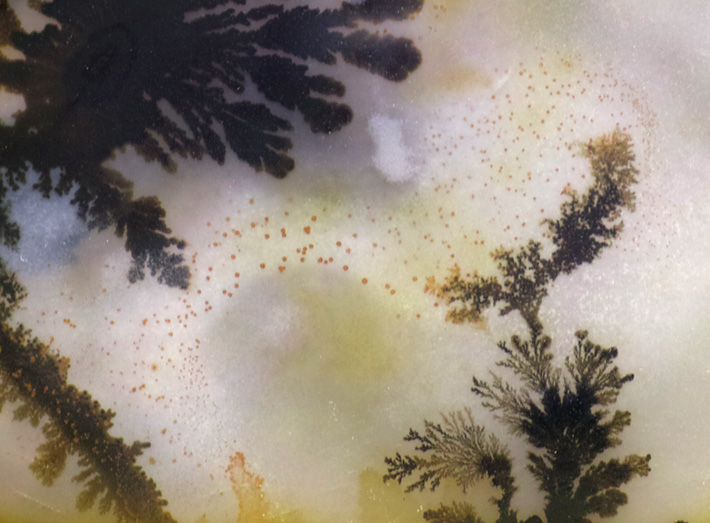
Laguna Agate
This type of agate gets its name from the location where it can be found: Ojo Laguna, Chihuahua, Mexico. It is a popular variety of agate with a great deal of banding, and it tends to be red to pink with peachy or white bands. Lagunas are famous for fine banding and superior quality.
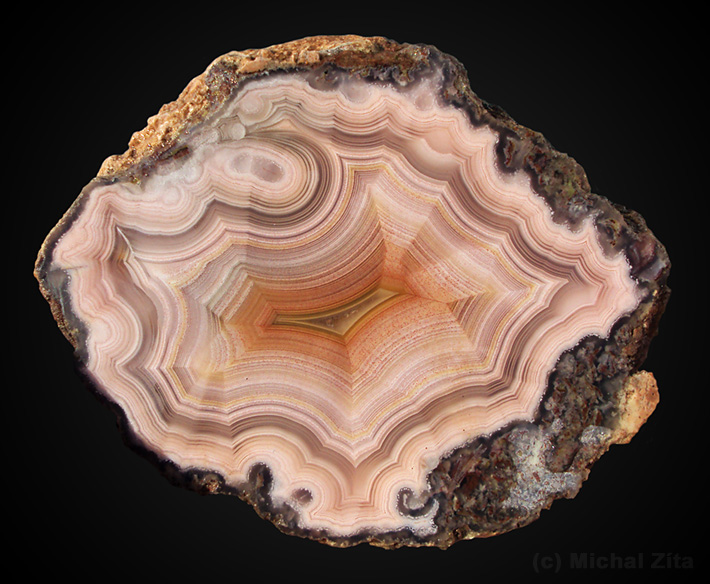
Eye Agate
The Eye Agate gets its name with good reason. The bands in this agate variety are rounded and concentric, forming the shape of an eye, an iris, and a pupil within the rock. It is commonly gray, red, purple, or white.
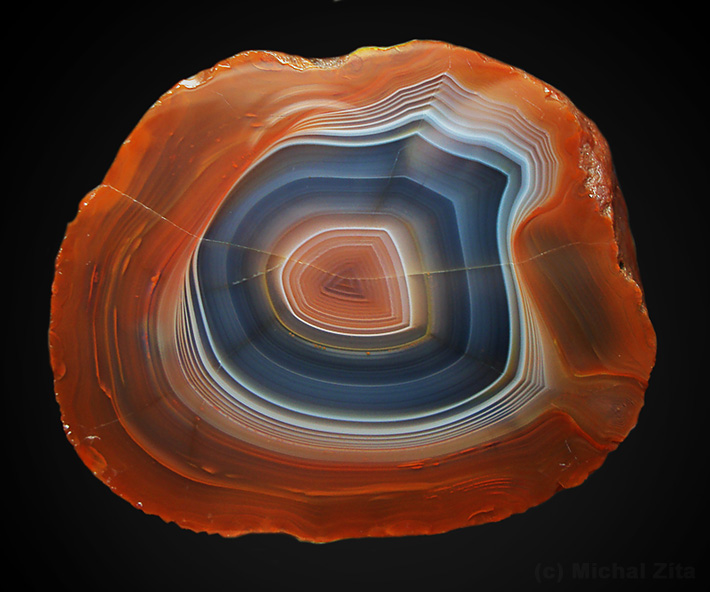
Iris Agate
Iris Agates are rare and valuable. They are highly iridescent, but feature a colorless or white bodycolor that is translucent in nature. Its specimens are almost ethereal in their beauty and uniqueness.
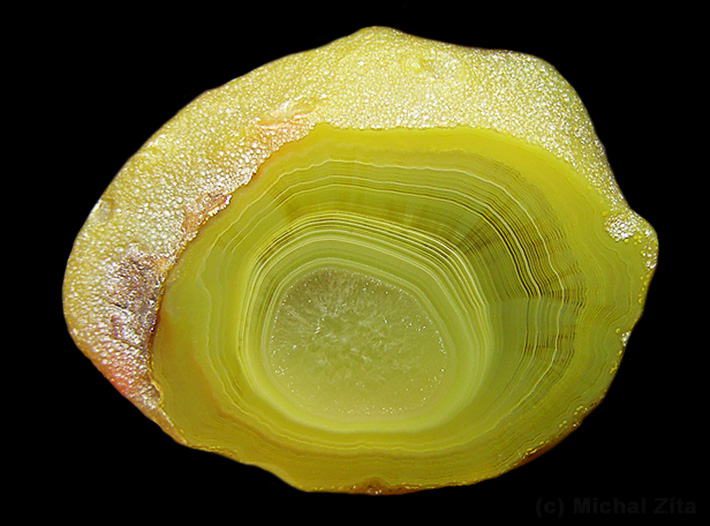
Fortification Agate
Fortification Agate may very well be the type of rock most people think of automatically when they hear the term agate. It features many concentric bands that resemble the lines inside the trunk of a tree. It gets its name from the similarity of these bands to a moat surrounding the walls of a medieval fortress.

Thunder-egg
Thuder-eggs are a special type of agate inside a rounded nodule which is present in ryolites or perlites. This name was originally introduced for certain agates from Oregon, but similar eggs occur also in New Mexico or Nowy Kosciol, Poland. Thunder-eggs form from nodules of volcanic material that contract during cooling and become cracked inside. The open spaces inside the nodule were later filled by silica-rich fluids and formed agates.
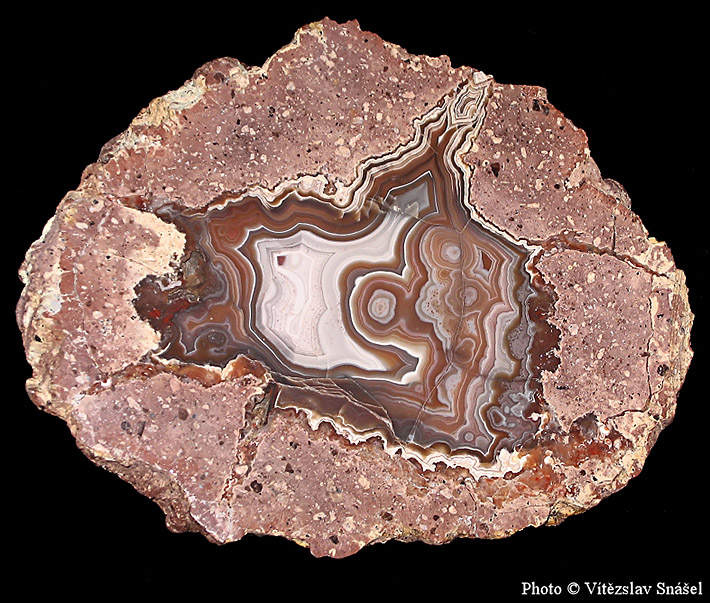
Plume, cloud or feather agate
This type of agate has irregular chalcedony or inclusion fans which look like feather or clouds. The most famous cloud agates are from Mexico. These are usually dark with white clouds and almost always have a geode inside.
Lightning agate
This is a very special type of strange agate from Czech Republic. It is called lightning agate because of its fractional shape. These agates form when silica-rich fluids pseudomorph baryte inside quartz-baryte veins. Such veins often contain a lot of hematite, which gets inside the chalcedony and causes its red color.
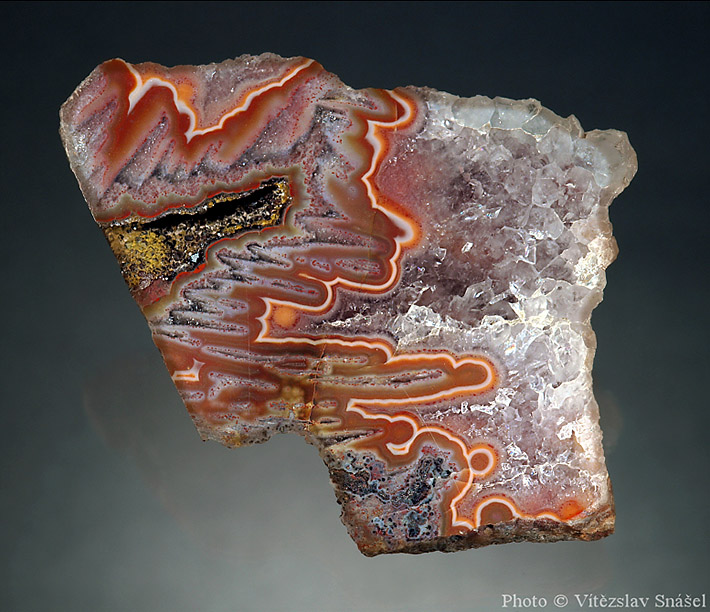
Breccia agate
Breccia agates might be of volcanic origin, however, they are much more common in hydrothermal veins. When the fissures inside the rock are not fully filled by the quartz, they may evolve into vein-type breccia agates. If the tectonic processes start again, they often crush the original content of the quartz vein and then silica-rich fluids may enter and cement it with chalcedony. Some breccia agates lack banding and some have layered chalcedony cemented around quartz or amethyst crystals. Sometimes the process repeats several times, resulting in chunks of banded agate and quartz crystals being cemented by younger chalcedony. Such breccia agate veins occur in the Czech Republic, Germany and Hungary.
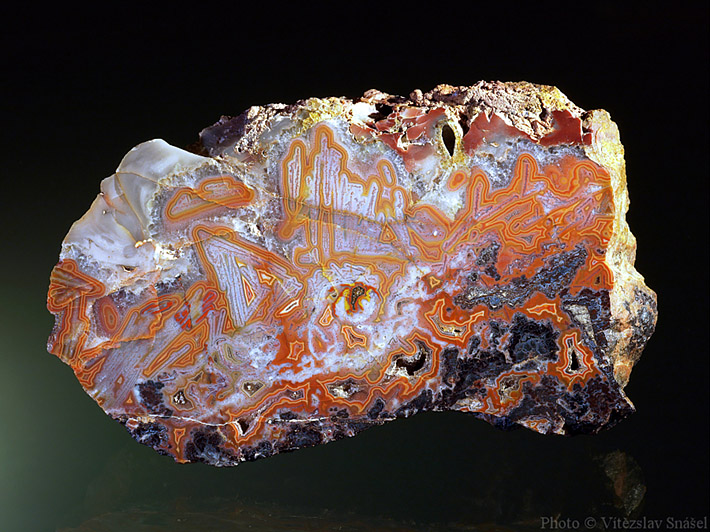





Comments
Ricardo Birnie said:
09.10.2016 15:56:28Loved your web-page. It is very simple to understand and photos are magnificent. Thank You!Ricardo & Claudia Birnie